Charlie Enright: If only it was that easy
Published on June 7th, 2023
While it’s only a one-point lead in The Ocean Race, 11th Hour Racing Team wouldn’t trade places with anyone. The team has been on a roll, winning the past two legs, and finally living up to their pre-race status as favorite. Scuttlebutt editor Craig Leweck checked in with its skipper Charlie Enright during their Danish stopover:
You won the transatlantic Leg 5, but you had a collision with, according to your team report, a marine mammal or megafauna. What’s megafauna?
Large marine animals living in the ocean.
I googled it, and it looked prehistoric, like something massive that’s hard to explain.
The reality is we don’t know what we hit, but it didn’t feel like a container and it was bigger than a fish. We went from 29 knots to 2 knots.
Any damage?
No boat damage. Biggest damage was to the people. Amory Ross broke his shoulder. He probably went flying forward about three meters backwards before he encountered the next bulkhead. He’s out, probably, through the rest of the race. We’re holding out hope for the last leg. Charlie Dalton got a baseball-sized lump on his head, which turned into a pretty nasty black eye. I’m no doctor, but I had to tell him that we had an incident with some megafauna three times before he really processed what was going on.
When the people went down, it wasn’t just like we were sailing with three people. We were three people assuming the responsibilities of the other two plus then having to take care of them as patients, administering drugs, checking them on periodically and moving them every time we tacked or gybed– it was like Weekend at Bernie’s.
Tell me about bringing on Charlie Dalin as crew for Leg 5, who is as hot in the IMOCA as anybody.
He knows the platform quite well. If there’s a boat that’s most similar to his in the world, it’s ours. It was the starting point for a lot of what we ended up doing. Plus, we have a history with him having trained together. However, it’s certainly different sailing with someone in a competitive environment, but he came in fresh and enthusiastic.
He’s a fast sailor. He’s a natural sailor. He’s also a trained naval architect, so he can articulate what he’s feeling and what he’s doing. There are plenty of people that have the feel, but can’t share those thoughts and feelings with others. He’s like the total package. He’s totally great.
Being successful in The Ocean Race is about improving throughout the race. Were there moments when he said, “Hey, let’s try this”?
We had a very open approach with Charlie because as much as he got on board and asked questions about how we do things and how the boat works and this and that, we made sure not to be closed-minded and asked him, “How would you do it in this situation on your boat?”
Plus, there was some back and forth about design differences and some things that we tried that didn’t work well, and he took away some things that we were doing that he’s going to try probably on his new boat. It proved to be a genuine symbiotic exchange of information.
Can you quantify how much better you’re sailing the boat now than at the start?
It’s tough to say, which has to do with the damage we incurred with our foils on Leg 2, and having to use our older foils on Legs 3 and 4. If you remember on Leg 2 in the South Atlantic coming into Cape Town, we set the 24-hour race record and had a sizable lead there for a while until we parked up under Table Mountain.
But we had them repaired and changed back to them in Newport, and feel they are certainly a step up from the ones that we had to use in the southern oceans and up the Atlantic to Newport. So that was helpful, for sure.
Any sail selection decisions for this next leg?
Not really. We get 11 sail cards and have used our last one for Leg 6. We’ve been saving it, so now all our sails are carded and make sail selections based on the forecast. The latest sail was the J0.
There’s redundancy in the inventory because some are workhorses that get inevitably blown out and you need to replace. But then there’s also specialty sails. So, there’s four extras and between those four, you need to decide what you want two of and what you want to maybe be a specialty sail, basically. It’s not much more complicated than that.
Speaking of workhorses, the mainsail got tattered in the southern oceans after Leg 3. Did you give it a proper funeral?
It was our intention to try to get that thing all the way around the world, but based on some operator error and an out-of-control jibe initiated by the autopilot, we replaced it in Brazil.
We previously discussed how your boat was designed for the original course and date of The Ocean Race, but then a one-year postponement and a revised course left you with a less evolved boat without certain strengths. Your boat design was not intended for conditions found in that long Leg 3.
We started feeling better about our boat in Brazil. Despite the Pacific origins of the boat’s name, it feels plenty at home in the Atlantic. It’s sea state issue, and when its heavy air running and big seas, we have trouble keeping the bow up. We’re a little sticky in light winds, but the boat is great reaching and upwind, and we are even good downwind when the sea state doesn’t overwhelm the wind speed.
We were lucky in the last leg that we got ahead of this front and had tight reaching angles with an easy sea state. We only really had big waves, maybe like three meters, by the Shetland Islands above Scotland. Other than that, there was plenty of wind speed, but from a sea state standpoint, this last leg was pretty benign.
This next leg includes from Denmark to Netherlands includes a fly-by in Germany. What’s a fly-by?
It is a mark rounding in Kiel and then we retrace our steps toward the top of Denmark, and then along the coast to The Hague. There’s more traffic separation schemes and exclusion zones in Leg 6 than I think there has been in the entire race around the world. Add in the wind farms and it’s navigationally very challenging. 800 miles. A three-day sprint.
From the look of the Leg 6 course, I suspect you could just get just about anything.
Tentatively, it could be moderate upwind to Kiel, and then wider wind angles toward the top of Denmark. Maybe a glass off there, and then you get a northwesterly fill in the North Sea down to The Hague. But the Baltic is like a lake. It’s really tough to get any kind of gradient to suck its way in here, so the wind is tough to predict and very geographic in nature.
Approaching the final two legs, how do you see yourself having evolved personally through this race?
I think what doesn’t kill you makes you stronger. We certainly experienced some adversity here in the first couple of legs, whether it’d be through technical issues or dumb luck or unforced errors, but to kind of learn from those on the fly. I think it’s made me a tougher person, I’d say. I think I’m a lot more comfortable being uncomfortable than I was probably at the start.
The fact that you’re having success at the end, I suspect your team has been evolving in the right direction.
A lot of people will tell you that we flipped the switch in Brazil, but if it was that easy, we’d have flipped the switch at the start, right? So, it has been about improving in every single area along the way.
We got to Cabo Verde, got off the boat, and there was no plan, so logistically, we were set up for failure. We got a lot better with the arrival scheduling. And then when we got to Cape Town, it was about the tech team and how we were going to structure their time and so on and so forth.
And now, just in every aspect of the campaign, whether it’s logistics, communications, tech, on-board, we’re just trying to be a little bit better, and even from a good experience, there’s something you can learn. We are just making sure that we don’t leave any meat on the bone.
Leg 6: From Aarhus, Denmark to a mark at Kiel, Germany and then back up and around the top of Denmark to the finish in The Hague, The Netherlands (800nm)
Leg 7: From The Hague, Netherlands, down the coast of western Europe, though the Strait of Gibraltar and into the Mediterranean Sea for the finish in Genova, Italy (2200nm)
Race details – Route – Tracker – Scoreboard – Content from the boats – YouTube
Overall Leaderboard (after 5 of 7 legs)
1. 11th Hour Racing Team — 28 points
2. Team Holcim-PRB — 27 points
3. Team Malizia — 24 points
4. Biotherm — 17 points
5. GUYOT environnement – Team Europe — 2 points
IMOCA: Name, Design, Skipper, Launch date
• Guyot Environnement – Team Europe (VPLP Verdier); Benjamin Dutreux (FRA)/Robert Stanjek (GER); September 1, 2015
• 11th Hour Racing Team (Guillaume Verdier); Charlie Enright (USA); August 24, 2021
• Holcim-PRB (Guillaume Verdier); Kevin Escoffier (FRA); May 8, 2022
• Team Malizia (VPLP); Boris Herrmann (GER); July 19, 2022
• Biotherm (Guillaume Verdier); Paul Meilhat (FRA); August 31 2022
The Ocean Race 2022-23 Race Schedule:
Alicante, Spain – Leg 1 (1900 nm) start: January 15, 2023
Cabo Verde – ETA: January 22; Leg 2 (4600 nm) start: January 25
Cape Town, South Africa – ETA: February 9; Leg 3 (12750 nm) start: February 26
Itajaí, Brazil – ETA: April 1; Leg 4 (5500 nm) start: April 23
Newport, RI, USA – ETA: May 10; Leg 5 (3500 nm) start: May 21
Aarhus, Denmark – ETA: May 30; Leg 6 (800 nm) start: June 8
Kiel, Germany (Fly-By) – June 9
The Hague, The Netherlands – ETA: June 11; Leg 7 (2200 nm) start: June 15
Genova, Italy – The Grand Finale – ETA: June 25, 2023; Final In-Port Race: July 1, 2023
The Ocean Race (formerly Volvo Ocean Race and Whitbread Round the World Race) was initially to be raced in two classes of boats: the high-performance, foiling, IMOCA 60 class and the one-design VO65 class which has been used for the last two editions of the race.
However, only the IMOCAs will be racing round the world while the VO65s will race in The Ocean Race VO65 Sprint which competes in Legs 1, 6, and 7 of The Ocean Race course.
Additionally, The Ocean Race also features the In-Port Series with races at seven of the course’s stopover cities around the world which allow local fans to get up close and personal to the teams as they battle it out around a short inshore course.
Although in-port races do not count towards a team’s overall points score, they do play an important part in the overall rankings as the In-Port Race Series standings are used to break any points ties that occur during the race around the world.
Held every three or four years since 1973, the 14th edition of The Ocean Race was originally planned for 2021-22 but was postponed one year due to the pandemic, with the first leg starting on January 15, 2023.


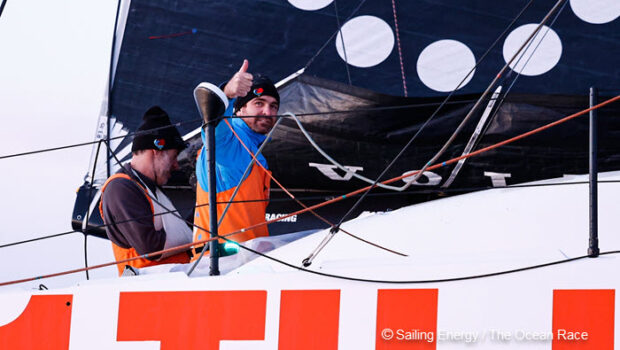


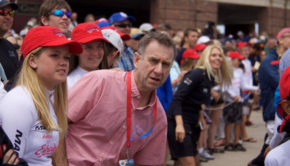
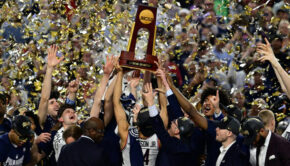
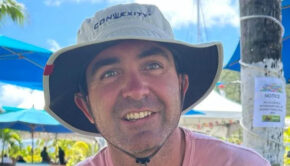
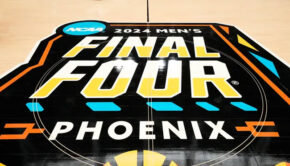
 We’ll keep your information safe.
We’ll keep your information safe.